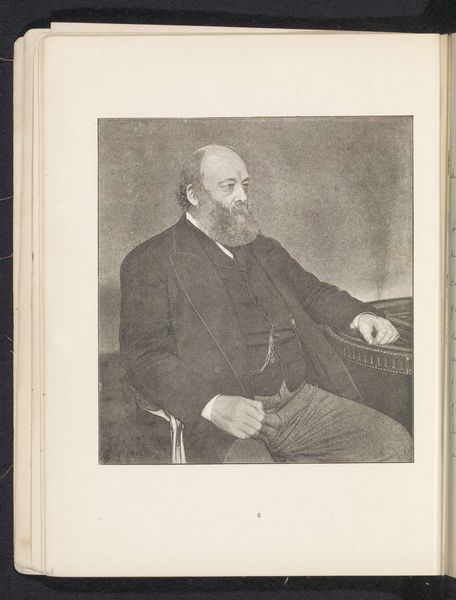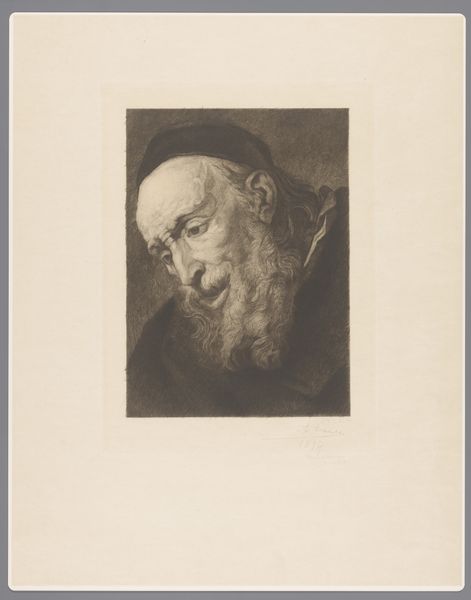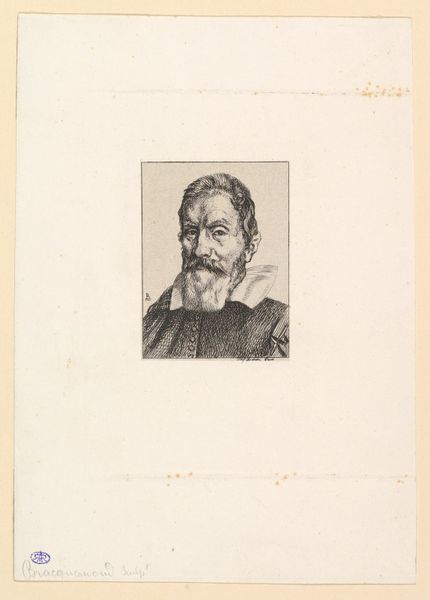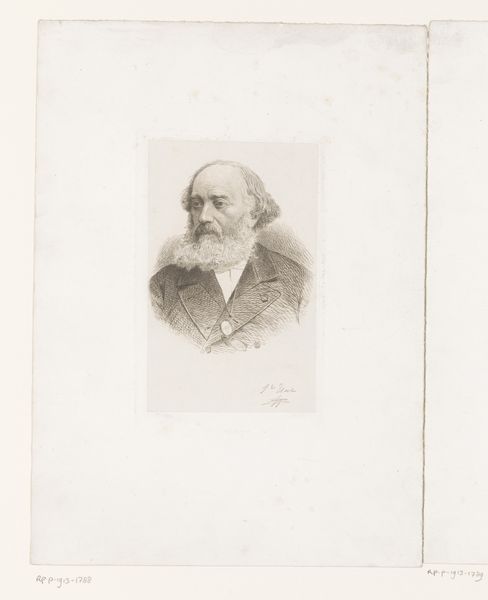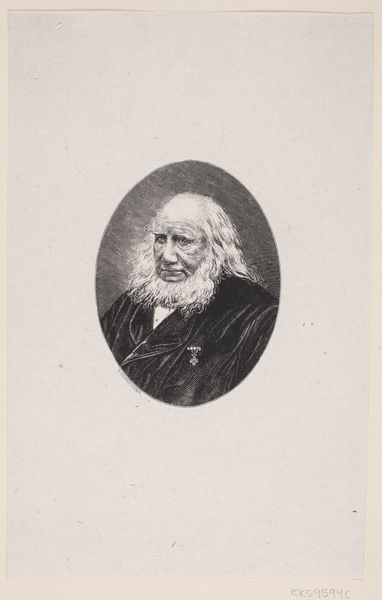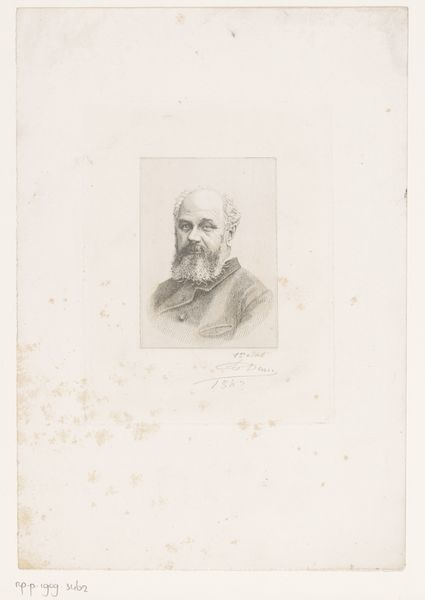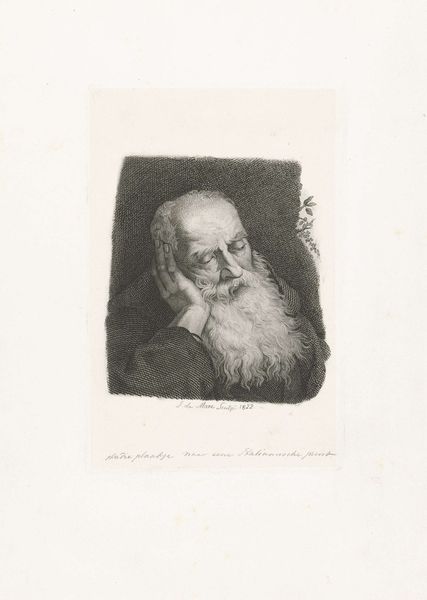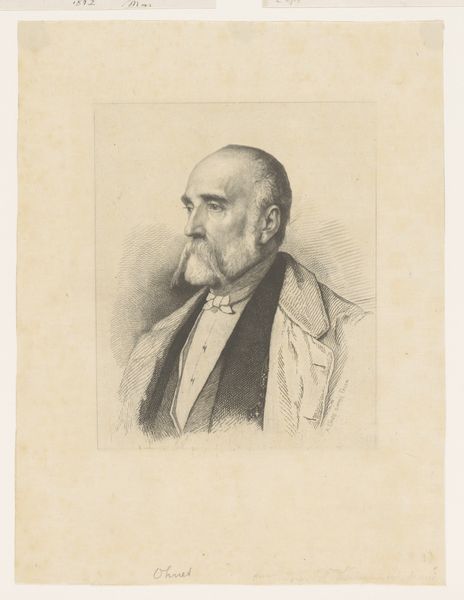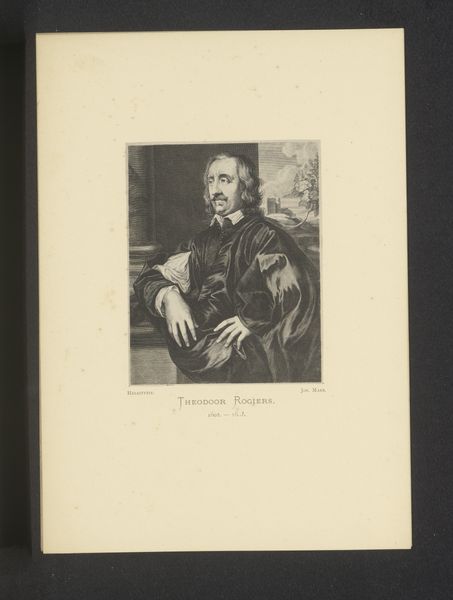
photography, gelatin-silver-print
#
portrait
#
pencil drawn
#
self-portrait
#
pencil sketch
#
photography
#
pencil drawing
#
gelatin-silver-print
#
realism
Dimensions: height 141 mm, width 103 mm
Copyright: Rijks Museum: Open Domain
Editor: This gelatin silver print is a portrait of Alfred Tennyson, taken by Henry Herschel Hay Cameron before 1891. There's a softness to it, a real sense of contemplation and depth in his gaze. What can you tell me about it? Curator: What strikes me immediately is the social positioning of the subject, right? Tennyson was Poet Laureate, and Cameron was known for photographing prominent Victorians. Photography in this period became a tool not only for documentation but for constructing narratives of power and influence. How does the soft focus affect that power dynamic for you? Editor: I guess it almost humanizes him. He's not presented as untouchable, but… vulnerable, maybe? Curator: Precisely! Consider how photography at the time was used to reinforce class distinctions and gender roles. Think of the prevailing aesthetic and ideology. Do you see anything challenging that in Cameron's choice here? Does it disrupt the traditional portrayal of Victorian masculinity? Editor: The lack of crisp detail maybe? It doesn't scream 'power,' it whispers something else. Curator: It invites a different kind of reading, one that acknowledges vulnerability and perhaps a more nuanced representation. Cameron blurs the edges, literally and figuratively, of Tennyson's identity. Think about the relationship between the artist and the sitter. What does that tell us about what Cameron might have wanted to convey? Editor: That's a lot to consider...I hadn't thought about photography as having this sort of impact. Thanks, that really reframes how I look at these kinds of images. Curator: Absolutely, context is key. It is a jumping off point for deeper inquiry into Victorian social and aesthetic values.
Comments
No comments
Be the first to comment and join the conversation on the ultimate creative platform.
